
Frattura ed Integrita Strutturale-Fracture and Structural Integrity
Scope & Guideline
Illuminating the Path to Enhanced Material Performance
Introduction
Aims and Scopes
- Fracture Mechanics and Structural Integrity:
The core focus of the journal is on fracture mechanics, emphasizing the analysis and prediction of crack initiation and propagation in materials and structures. This includes classical approaches as well as modern computational techniques like the Extended Finite Element Method (XFEM) and Cohesive Zone Modeling (CZM). - Material Behavior under Load:
The journal publishes research on the mechanical properties of various materials, including metals, composites, and concrete, particularly under conditions of stress, fatigue, and impact. This involves experimental studies, numerical simulations, and theoretical modeling. - Innovative Testing and Monitoring Techniques:
A significant area of interest is the development and application of advanced testing techniques and monitoring systems for structural health assessment. This includes machine learning algorithms for damage detection and remote sensing technologies. - Additive Manufacturing and Material Optimization:
There is a growing emphasis on the effects of additive manufacturing processes on material properties and performance. Research often focuses on optimizing manufacturing parameters to enhance the mechanical characteristics of components produced via these techniques. - Sustainability and Innovative Materials:
The journal also addresses sustainability in engineering by exploring the use of recycled materials, bio-based composites, and self-healing materials, reflecting a trend towards environmentally friendly practices in structural engineering.
Trending and Emerging
- Machine Learning and AI in Structural Health Monitoring:
There is an increasing trend towards utilizing machine learning algorithms and artificial intelligence for structural health monitoring and damage detection. This shift reflects the industry's move towards data-driven decision-making and predictive maintenance strategies. - Additive Manufacturing Innovations:
Research focusing on additive manufacturing techniques is on the rise, particularly studies that explore the mechanical properties of additively manufactured components and optimization of printing parameters. - Advanced Composite Materials:
The exploration of advanced composite materials, including their fracture behavior and mechanical properties, is gaining momentum. This includes the development of bio-based composites and hybrid materials that offer improved performance. - Sustainability in Engineering Practices:
A growing emphasis on sustainable engineering practices is evident, with research focusing on the use of recycled materials and environmentally friendly composites, reflecting the industry's commitment to sustainability. - Dynamic Loading and Impact Analysis:
There is an increasing focus on dynamic loading conditions and impact analysis, with studies investigating the performance of materials and structures under realistic loading scenarios, including blast and seismic events.
Declining or Waning
- Classical Fracture Mechanics:
Although still relevant, traditional approaches to fracture mechanics are being overshadowed by more advanced computational techniques and machine learning applications. Research utilizing classical methods without integration of modern technologies is becoming less frequent. - Basic Material Testing:
There seems to be a waning interest in basic mechanical testing of materials without a focus on advanced applications or contextual relevance, such as specific structural applications or innovative materials. - Historical Case Studies:
While historical analyses of structural failures and case studies were once common, there is a noticeable decrease in such publications, likely due to a shift towards more predictive and proactive approaches in structural health monitoring. - Static Loading Analysis:
Research focusing solely on static loading conditions is becoming less prevalent. There is a growing preference for studies that encompass dynamic loading, fatigue, and real-world applications that reflect the complexities of modern engineering challenges.
Similar Journals

Materials Physics and Mechanics
Advancing the Frontiers of Materials ScienceMaterials Physics and Mechanics is a pivotal journal dedicated to advancing the fields of condensed matter physics, materials science, mechanical engineering, and the mechanics of materials. Published by the Institute of Problems in Mechanical Engineering, Russian Academy of Sciences, this journal has established itself as a valuable resource since its inception, particularly from 2003 to 2004 and now continuously from 2009 to 2024. Although it currently holds a Q4 categorization in various disciplines, its contributions are critical to understanding and developing new materials and their applications in engineering. The journal provides insightful articles that explore the nuances of material properties, their behaviors under different conditions, and the physical principles governing these phenomena. Though it operates under a traditional publication model, the insights provided within its pages are invaluable to researchers, professionals, and students striving to push the boundaries of knowledge in the materials domain. Its ISSN numbers (1605-2730, E-ISSN 1605-8119) serve as a gateway to a wealth of scientific knowledge emanating from the Russian Federation, contributing to the global discourse in materials physics and mechanics.
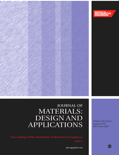
PROCEEDINGS OF THE INSTITUTION OF MECHANICAL ENGINEERS PART L-JOURNAL OF MATERIALS-DESIGN AND APPLICATIONS
Catalyzing Breakthroughs in Mechanical Engineering and Materials SciencePROCEEDINGS OF THE INSTITUTION OF MECHANICAL ENGINEERS PART L-JOURNAL OF MATERIALS-DESIGN AND APPLICATIONS is a prestigious academic journal published by SAGE PUBLICATIONS LTD, focusing on the dynamic fields of mechanical engineering and materials science. With an impressive impact factor reflective of its rigorous scholarly contributions, this journal serves as a vital platform for the dissemination of innovative research and practical applications in materials design and engineering processes. Since its inception in 1999 and continuing through 2024, it has maintained a robust reputation, achieving a Q2 ranking in both Materials Science (miscellaneous) and Mechanical Engineering categories, as well as commendable Scopus ranks that place it in the top percentiles of its fields. Located in the United Kingdom, the journal encourages submissions from researchers and professionals who are seeking to advance their understanding of materials applications while fostering interdisciplinary collaboration. Although it currently operates under traditional access terms, the journal prioritizes impactful research that addresses contemporary challenges in design and manufacturing, ensuring that it remains a must-read for anyone invested in the innovations shaping our technological landscape.

International Journal of Mechanics and Materials in Design
Innovating Solutions at the Intersection of Mechanics and MaterialsInternational Journal of Mechanics and Materials in Design is a leading publication in the field of mechanical engineering and materials science, published by Springer Heidelberg. With an impressive impact factor, it holds esteemed rankings as Q1 in both Mechanical Engineering and Mechanics of Materials, and Q2 in Materials Science for the year 2023, solidifying its reputation as a significant contributor to the advancement of design methodologies. The journal focuses on the intersection of mechanics and materials, encouraging innovative research that addresses contemporary challenges faced in engineering disciplines. Researchers and professionals alike can benefit from accessing cutting-edge studies contributing to various applications, making it an invaluable resource for staying informed in this dynamic field. While the journal operates under a subscription model, its comprehensive reviews and high-quality original research foster a deeper understanding of material behavior and design principles, thus supporting the academic growth and professional development of its readers.

Journal of Structural Integrity and Maintenance
Fostering Excellence in Civil Engineering and Materials ScienceThe Journal of Structural Integrity and Maintenance, published by Taylor & Francis Ltd, serves as a prestigious platform dedicated to the advancement of knowledge in the fields of structural integrity, civil engineering, and materials science. With an ISSN of 2470-5314 and an E-ISSN of 2470-5322, this journal is uniquely positioned to address the critical challenges faced by researchers and professionals in building and construction, mechanical engineering, and related domains. Since its inception in 2016, this journal has been consistently recognized for its quality, currently holding a Q2 rank across several disciplines, including Building and Construction and Civil and Structural Engineering in 2023. The journal aims to publish high-quality research that contributes to the understanding and maintenance of structural integrity, fostering innovations that promote safety, efficiency, and sustainability in engineering practices. Researchers and students alike are encouraged to engage with this rich repository of knowledge, which plays a vital role in shaping future advancements in structural engineering and materials science.
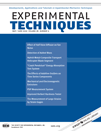
EXPERIMENTAL TECHNIQUES
Pioneering Innovation in Mechanical EngineeringEXPERIMENTAL TECHNIQUES, an esteemed journal published by Springer, serves as a crucial platform for fostering innovation and research in the fields of Mechanical Engineering and Mechanics of Materials. Established in 1975 and continuing its legacy through to 2024, it aggregates a wealth of studies that exemplify rigorous experimental methodologies and emerging technologies. With its remarkable standing as a Q2 journal in Mechanical Engineering and Q3 in Mechanics of Materials, it ranks in the top half of its categories on Scopus, indicating its relevance and impact in the academic community. While the journal is not open access, it ensures accessibility to high-quality research findings essential for advancing knowledge and expertise among researchers, professionals, and students alike. EXPERIMENTAL TECHNIQUES continues to be a vital resource for those involved in the dynamic landscape of experimental mechanics, aiming to push boundaries and explore new frontiers in engineering.

INTERNATIONAL JOURNAL OF FRACTURE
Connecting Researchers through Cutting-edge Fracture InsightsInternational Journal of Fracture, published by Springer, stands as a leading peer-reviewed platform dedicated to advancing the field of fracture mechanics and its applications. Since its inception in 1973, this journal has provided a crucial forum for innovative research and discussions, addressing pivotal topics in computational mechanics, mechanics of materials, and modeling and simulation. With a significant impact factor and a Q1 classification in computational mechanics, it ranks impressively within the Scopus metrics, further solidifying its relevance among global researchers and professionals. The journal caters to an international audience by fostering the exchange of knowledge and cutting-edge discoveries, making it an essential resource for those engaged in the latest advancements and applications in material fracture studies. Its commitment to high-quality research ensures that the findings published within its pages not only contribute to academic discourse but also influence real-world engineering and manufacturing practices.
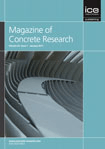
MAGAZINE OF CONCRETE RESEARCH
Transforming Ideas into Concrete InnovationsThe Magazine of Concrete Research, published by Emerald Group Publishing Ltd, is a pivotal journal in the fields of Building and Construction, Civil and Structural Engineering, and Materials Science, boasting an impressive track record since its inception in 1949. As of 2023, it holds a Q2 category ranking across its related disciplines, indicating its strong influence and credible contributions to the field with Scopus ranks placing it favorably among its peers. With an emphasis on advancing knowledge surrounding concrete technology and construction practices, this journal serves as a key resource for researchers, industry professionals, and students alike. Though not Open Access, the Magazine of Concrete Research continues to cut through the complexities of concrete-related innovations, inspiring advancements in both academic research and practical applications. Engage with the latest findings and technological developments in concrete research, ensuring you stay at the forefront of this essential field.

Frontiers of Structural and Civil Engineering
Leading the Charge in Architectural and Civil Engineering DiscoveriesFrontiers of Structural and Civil Engineering, published by HIGHER EDUCATION PRESS, is a premier academic journal dedicated to advancing the fields of architecture, civil, and structural engineering. With an ISSN of 2095-2430 and E-ISSN of 2095-2449, this journal caters to the dissemination of high-quality research and innovative practices from 2012 onwards, highlighting important developments up until 2024. Ranked in the top quartile (Q1) for Architecture and Q2 for Civil and Structural Engineering in 2023, it holds an impressive Scopus ranking of #19 out of 189 in Architecture and #101 out of 379 in Civil and Structural Engineering, reflecting its impact and relevance in the scientific community. This journal invites contributions that demonstrate pioneering approaches, fostering collaboration among researchers, professionals, and students alike, and significantly contributes to the global knowledge base in the engineering disciplines.
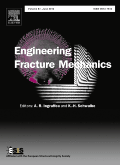
ENGINEERING FRACTURE MECHANICS
Pioneering Insights into Stress and StructureENGINEERING FRACTURE MECHANICS, published by Pergamon-Elsevier Science Ltd, is a leading peer-reviewed journal that specializes in the field of fracture mechanics, focusing on the behavior of materials under stress. Established in 1968 and continuing to publish valuable research through 2024, this journal is pivotal for advancing the understanding of fracture mechanisms and their implications across various engineering disciplines. With its impressive impact factor and ranked in the Q1 category for Materials Science, Mechanical Engineering, and Mechanics of Materials, it holds a distinguished position in the academic community, reflected in its high Scopus rankings. Although the journal does not offer Open Access, it provides a wealth of knowledge and insights critical for researchers, professionals, and students aiming to deepen their expertise in the mechanics of materials and innovative engineering solutions.
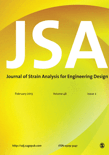
JOURNAL OF STRAIN ANALYSIS FOR ENGINEERING DESIGN
Pioneering Research in Mechanics and Materials Engineering.The Journal of Strain Analysis for Engineering Design, published by SAGE Publications Ltd, is a prestigious academic journal that has been at the forefront of *engineering and applied mathematics* research since its inception in 1965. With a focus on the intricate analysis of strain in engineering design, this journal serves as a vital resource for researchers and professionals seeking to push the boundaries of understanding in mechanics and materials engineering. As of 2023, it enjoys a respectable ranking in its respective fields, including Q2 in *Mechanical Engineering* and *Mechanics of Materials*, and Q3 in *Applied Mathematics* and *Modeling and Simulation*, reflecting its significant contribution to the academic community and relevance in practical applications. Although it is not an open-access journal, its rigorous peer-review process ensures the dissemination of high-quality research. The journal provides a platform for innovative ideas and methodologies, fostering advancements in engineering design and analysis vital for both academia and industry. By bridging theoretical foundations with real-world applications, the Journal of Strain Analysis for Engineering Design remains an essential publication for those dedicated to addressing the complexities of modern engineering challenges.